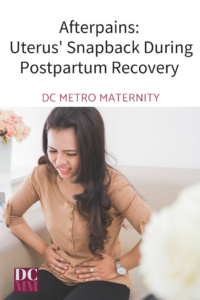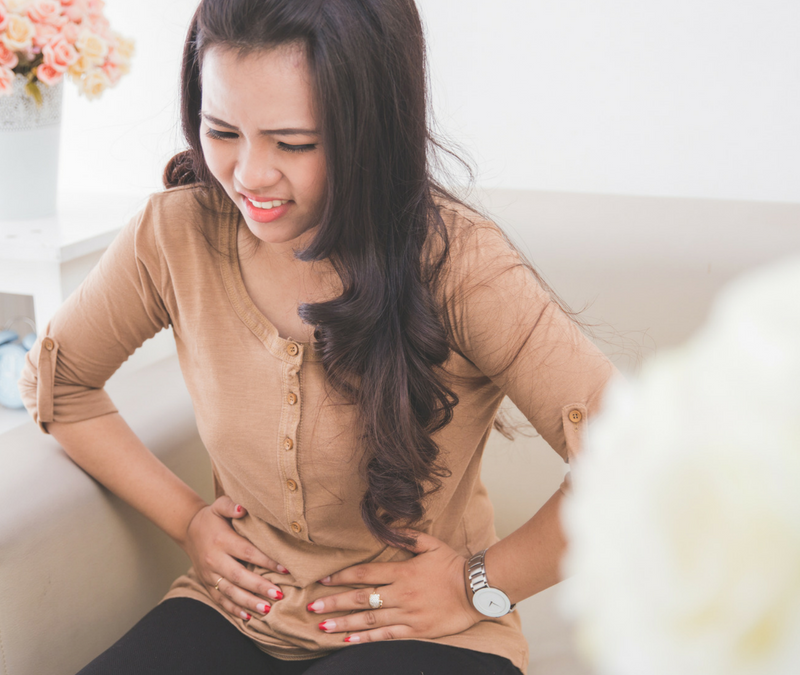You are a beautiful goddess of a mother. You came home from the hospital this morning, and you’re already feeding your newborn at the breast (with a latch that doesn’t hurt!), while your toddler stares at their new sibling in awe. Your partner is fixing you a snack, and you’re pretty sure you’re going to rock this whole “2 kids under 2” thing.
As you realize how amazing this all seems to be going, you think to yourself, “Take that mommy blogs!”
Then, suddenly, there’s a cramp. More than a cramp. That’s a contraction. A f***ing contraction! You thought you were done with these! But it’s intense.
You don’t remember this from your first child, but you want to get through this nursing session, so you just hold on and hope it goes away.
What on earth was that?
Afterpains, also known as involution or postpartum uterine cramping.
Strangely, this is one of those things that many people don’t mention when they discuss what to expect postpartum. And because afterpains are often stronger with each subsequent child, they often catch experienced mothers off guard! So if they surprised you, know that you’re not alone.
To think about why these occur, consider that prior to pregnancy, your uterus is similar to a pear (upside down inside your body) in both size and shape. And by the end of pregnancy, it may be as big as a watermelon. If you’re in the habit of produce shopping, you know that this is an enormous change.
Before you even leave the labor and delivery room, your uterus has already begun to shrink quite a bit. The birth of your baby, the placenta and the amniotic fluid emptied it out quite a bit. And then it’s like that your midwife, doctor and nurse applied pressure to your belly to encourage your uterus to empty out and begin shrinking. (It’s called a fundal massage since the fundus is the top of your uterus. But it’s not relaxing at all. Sorry.)
Even after all of that, you can imagine that up to 10 months of stretching can’t all be undone in an instant.
And so the uterus has to shrink back by doing one of the things it does best- contracting. Voila! Afterpains!
Think of afterpains as your uterus’ effort to make its own snapback, just like all the moms on instagram and magazines.
It’s also no coincidence that you may notice the afterpains most strongly during breastfeeding. Oxytocin is a hormone that is involved in bonding and the let down of your milk, making breastfeeding possible. It also has a lot to do with uterine contractions, before during and after labor.

Now, what can you do about this pain? You don’t have to just grin and bear it.
-
Stay hydrated. And rest. Water and sleep helps everything, right?
-
Don’t hold onto that water! A full bladder gets in your uterus’ way, and can make the afterpains more painful.
-
Put a heating pad on the area, similarly to how you might for menstrual cramps.
-
Apply pressure to your uterus. You can do this by massaging your uterus similarly to how the hospital staff did. You can also lie face down on with a pillow under your lower belly.
Of course, pain medication is an option to discuss with your doctor or midwife. Studies have found that NSAIDs are particularly effectivel, but you should consult with a medical professional.
You can also take comfort in the knowledge that this passes. Afterpains usually peak within about 4 days, so within the first week after birth, you can expect things to get better.
So the takeaway? You are in fact a mothering goddess, and this is just an unfortunate side effect that goddesses have to deal with.
Learn more about our postpartum support here!



I remember being two weeks postpartum and feeling my very first after pain. I thought something was very wrong. I reluctantly took some pain meds and wondered if it was normal or not. When I asked my doctor about it amy 6 week check up, she assured me it was normal. To me afterpains were worst than my actual labor and delivery. I appreciate you taking the time to write about this topic.
I think it can be really unsettling, and it must be really tough to not have the information you need for a whole month, to know that it’s normal.
Thank you for reading!